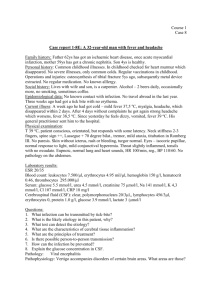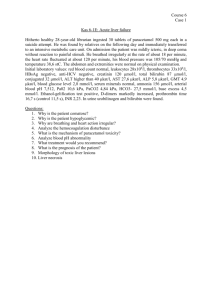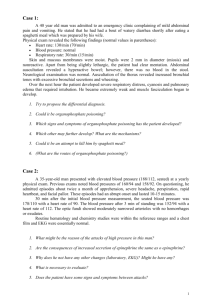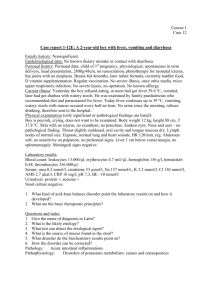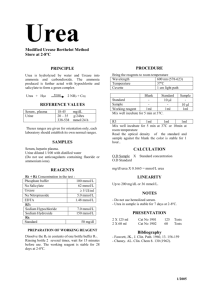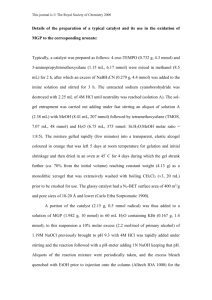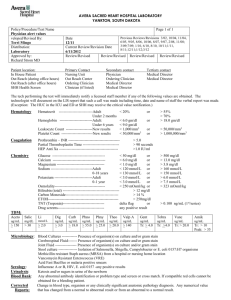Acute Renal Failure
advertisement
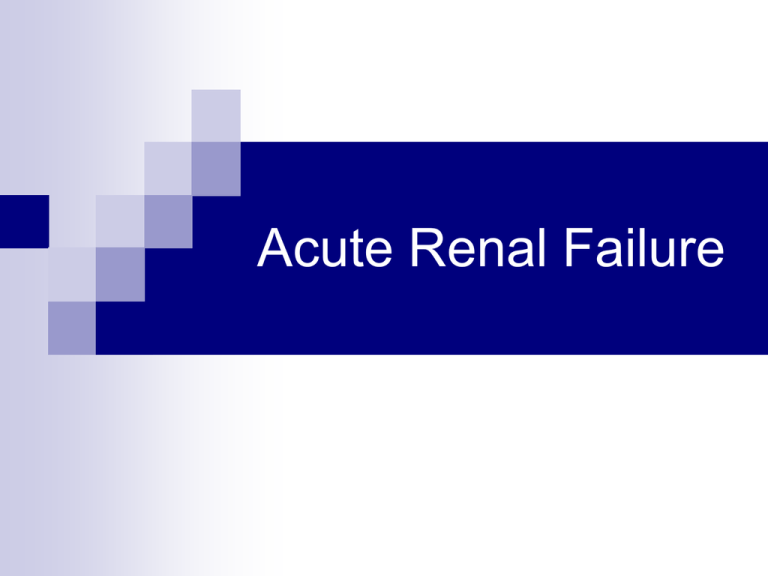
Acute Renal Failure CASE 1 Mr. B. is a patient in the intensive care unit with ARF whose arms are observed to flex in intermittent involuntary tonic contractions. Urea and electrolyte results revealed the following (normal value) Sodium 142 mmol/L (135-145) Potassium 5.1 mmol/L (3.5-5.0) Calcium 1.72 mmol/L (2.20-2.55) Phosphate 1.8 mmol/L (0.9-1.5) Urea 34.9 mmol/L (3.0-6.5) Creatinine 485 μmol/L (50-120) Question: What is the cause of this condition and how should it be treated? CASE 2 Mr D has been admitted to an intensive care unit with ARF which developed following a routine cholecystectomy . his electrolyte picture shows the following Sodium 138 mmol/L (135-145) Potassium 7.2 mmol/L (3.5-5) Urea 32.1 mmol/L (3-6.5) Bicarbonate 19 mmol/L (22-31) Creatinine 572 μmol/L (50-120) pH 7.28 (7.36-7.44) CASE 2 the patient was connected to an ECG monitor and the resultant trace indicated absent p-wave and a broad QRS complex. Question: Explain the biochemistry and ECG abnormalities and indicate what therapeutic measures must be implemented. Answer of case 1 Convulsion is due to electrolyte disturbance Treatment: Correction of electrolytes (ca- gluconate , phosphate binder) Anticonvulsant and hemodialysis Answer of case 2 Hyperkalemia is one of the principal problems encountered in patients with renal failure. The increased levels of k arise from failure of the excretory pathway &also from intracellular release of k. attention should also be paid to pharmacological or pharmaceutical processes that might lead to k elevation “k-supplement, ACE I “. The acidosis noted in this patient, which is common in ARF, also aggravates hyperkalemia by promoting leakage of k from cells. Serum k level greater than 7 m mol\L indicates that emergency ttt is required as the patient risk-life-threatening ventricular arrhythmia &asystolic cardiac arrest if EEG changes are present as in this case emergency ttt should be initiated when serum k rise above 6.5 m mol\L . Answer of case 2 The emergency ttt should include the following: 1-Stabilization of the myocardium by I.V administration of 10-30 ml ca.gluconate 10% over 5-10 min the effect is temporary but the dose can be repeated. 2-I.V adm. Of 10-20 units of soluble insulin with 50 ml of 50% glucose to stimulate cellular k uptake the dose may be repeated. The blood glucose should be monitored for at least 6 hr to avoid hyperglycemia. Answer of case 2 3-I.V salbutamol 0.5 mg in 100ml 5%dextrose over 15 min has been used to stimulate the cellular sod-k-atpase pump & thus drive k into cells. This may cause disturbing muscle tremors at the doses required to reduce serum k levels. 4-Acidosis may be corrected with I.V dose 50-100 ml of NaHCO3 8.4% correction of acidosis stimulates cellular k –uptake. Hypertonic HCO3 soln(8.4%)can cause volume expansion & should be used with extreme caution.
